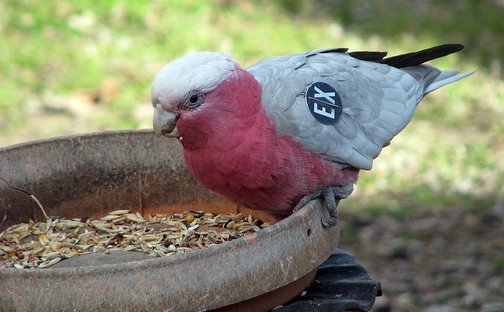
We spotted this galah in the backyard yesterday, wearing “badges” on its wings marked “EX”. Is this an ex-galah, one half of a failed relationship, an express courier galah or what?
It was flying with other galahs and seemed quite normal in its behaviour.
Just wondering what’s going on here – maybe this is some sicko scientific research project. Or some sort of McDonalds giveaway – collect galahs making up a common word and you win a prize?












